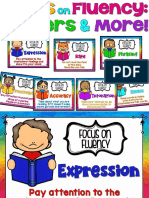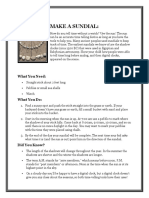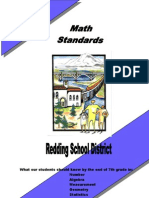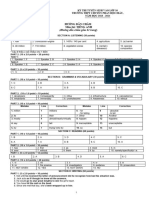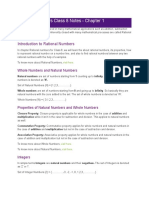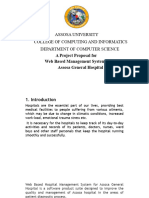0 ratings0% found this document useful (0 votes)
302 views2nd Grade Curriculum
2nd Grade Curriculum
Uploaded by
api-253446980Copyright:
© All Rights Reserved
Available Formats
Download as PDF, TXT or read online from Scribd
2nd Grade Curriculum
2nd Grade Curriculum
Uploaded by
api-2534469800 ratings0% found this document useful (0 votes)
302 views6 pagesOriginal Title
2nd grade curriculum
Copyright
© © All Rights Reserved
Available Formats
PDF, TXT or read online from Scribd
Share this document
Did you find this document useful?
Is this content inappropriate?
Copyright:
© All Rights Reserved
Available Formats
Download as PDF, TXT or read online from Scribd
Download as pdf or txt
0 ratings0% found this document useful (0 votes)
302 views6 pages2nd Grade Curriculum
2nd Grade Curriculum
Uploaded by
api-253446980Copyright:
© All Rights Reserved
Available Formats
Download as PDF, TXT or read online from Scribd
Download as pdf or txt
You are on page 1of 6
2ND GRADE
PARENT AKS BROCHURE
Academic
Knowledge
and Skills
201011
Gwinnetts curriculum for grades K12 is
called the Academic Knowledge and Skills
(AKS). The AKS for each grade level spell out
the essential things students are expected
to know and be able to do in that grade or
subject. The AKS offer a solid base on which
teachers build rich learning experiences.
Teachers use curriculum guides, textbooks,
technology, and other materials to teach
the AKS and to make sure every student is
learning to his or her potential.
The Academic Knowledge and Skills (AKS)
were developed by our teachers, with
input from our parents and community,
in response to Gwinnett County Public
Schools mission statement:
The mission of Gwinnett County Public
Schools is to pursue excellence in
academic knowledge, skills, and behavior
for each student resulting in measured
improvement against local, national,
and world-class standards.
Read on to learn more about what your child
will learn during 2nd grade and how you
can support your childs learning at home.
We encourage you to talk to your child
about what he or she is learning.
WELCOME TO 2nD GRADE!
Language Arts
Learning to read and write is the basis for all learning. In 2nd
grade, students work on reading and writing skills that will lead
to success in subsequent grade levels. Specifcally, the focus
is on sounds and words, as well as reading and writing with
accuracy and expression. Students use reading and writing
skills throughout the school day as part of Language Arts,
Mathematics, Science, and Social Studies classroom activities.
Activities include shared reading and
writing experiences, choral reading,
small-group guided reading, and
independent reading and writing times
all within the context of classroom
instruction and Writing Workshop.
By the end of 2nd grade, all students are expected to:
Understand sound/letter relationships and patterns in words,
such as consonant and vowel sounds, consonant blends, and
word families (-eam, -ight);
Use grade-appropriate grammar and spelling skills in writing;
Acquire skills to become lifelong readers and writers, such as
self-selection of books, self-monitoring to correct errors when
reading and writing, and talking with and listening to peers
about ones reading and writing;
Use reading and writing to communicate through listening,
speaking, and viewing.
Balanced Literacy
Teachers follow these principles to determine the best teaching
methods, strategies, and materials to meet the needs of our
students:
Learning to read and write is a complex process with many facets.
Reading and writing are about experiencing language, not
merely practicing isolated skills.
Reading and writing are interconnected forms of
communication that emerge from listening and speaking.
Tere is no one way to teach reading or writing. Teachers will
incorporate a wide variety of strategies to teach every student.
Learning to read and write occurs along a developmental
progression of stages.
All children can learn to read and write along this
developmental progression with appropriate accommodations.
Knowing where each child is developmentally enables teachers
to evaluate, plan, and teach appropriately.
Children should be immersed in a print-rich environment.
Reading and writing to, with, and by children should occur
daily.
Each day, children should have opportunities to read materials
they select themselves and write on self-selected topics.
Reading and writing are integrated into all subject areas.
Listening, Speaking, and Viewing
2nd graders listen to and write about a variety of literary forms,
such as stories and poems, in a variety of fction and nonfction
genres. Tese include poetry, fables, folktales, biographies, and
reports. Tey learn to listen attentively in order to respond to
questions and directions. Students communicate in conversation
with descriptive language by relating experiences and retelling
stories. Tey discuss various literary and nonliterary elements,
such as character, setting, plot, and theme, cause/efect, and main
idea and supporting details.
Reading
Strategies and Comprehension
2nd graders read texts with photographs and illustrations
to summarize, compare and contrast, evaluate, and develop
inferences based on what they read. Students read a variety of
texts for both pleasure and purpose. Tey distinguish between
fact and fction. 2nd graders read and discuss their own writings
in conversations with adults and peers. Tey are expected to read
grade-level texts with appropriate accuracy, speed, and expression
in order to efectively comprehend what they read.
Word Work, Fluency, and Vocabulary
By the end of the year, 2nd graders should be able to read and
spell common sight words. Ask your childs teacher for a list of
common sight words. During the 2nd grade year, teachers assess
students knowledge of these words and their ability to use them
easily in their reading and writing.
Writing
At this age, students write fction and nonfction stories with
appropriate beginning, middle, and end. Tey are continuing
to develop a sense of their audience and their own voice. 2nd
graders are learning to write for a specifc purpose. Students
use grade-appropriate grammar, spelling, capitalization, and
punctuation in their writing. Tey are able to share their writing
with others.
Books to Read with Your 2nd Grade Student
The Random House Book of Poetry for Children
Get Ready for Second Grade, Amber Brown
The Adventures of Taxi Dog
Frog and Toad series
We are Best Friends
Duck for President
Roger the Jolly Pirate
Cam Jansen series
Diary of a Worm
More Great Books for
Children
Georgia Book Award Books:
www.coe.uga.edu/gcba
100 Best Books:
www.teachersrst.com/100books.cfm
American Library Association Notable Books for Children:
www.ala.org/ala/awardsgrants
Help your child build his personal library. Visit the used book
store, garage sales, book swaps, and school book sales.
Set aside daily reading time at home. Read aloud a chapter or
two together each night.
Be a good example. Let your child see you reading.
Visit the library regularly.
Literacy Tips
for Parents
Learn more about
the Language Arts
AKS online.
Science
In 2nd grade, children investigate the world around them
and learn to ask questions and make predictions about their
observations. Trough inquiry-based exploration, students learn
content in the earth, life, and physical sciences. Tey use scientifc
tools to collect data and begin to practice proper processes and
lab techniques used in the study of science.
Characteristics of Science
Students in 2nd grade recognize the value in repeating steps in
a scientifc investigation and begin to conduct multiple trials of
experiments to collect data. Children explore the multiple parts
that make up a larger object and begin to dissemble and re-
assemble models that represent science concepts. Tey discuss the
importance of caring for and meeting the needs of living things.
Types of Science
Earth Science
2nd graders describe the universe the moon, sun, planets, and
stars. Tey discuss the physical attributes of
objects in the sky. Students investigate the
position of the sun and moon at various times
of the year. Tey recognize how the lengths of
day and night change as the seasons change.
Life Science
Children investigate the life cycles of diferent organisms and
illustrate the life cycle of common animals. Students relate seasonal
changes to observations of how trees change during the school year.
Physical Science
Children explore properties of matter and the changes that
matter undergo. Students learn to sort samples based on their
state of matter at room temperature. Tey learn how to observe
the physical properties of matter. 2nd graders identify sources
of energy and how energy is used in the world. Children explore
speed and changes of speed as a result of force acting on an object.
GCPS Social Studies program prepares students to participate as
constructive citizens in a democratic society. Students understand
their role and responsibility as citizens. Tey discover Americas
heritage and its role and responsibility in the world. Students
relate the past to the present. Tey learn the similarities and
diferences between nations, cultures, and peoples of the world.
Students interpret maps and globes, process information, and solve
problems. Temes of study include: Beliefs and ideas infuence
decisions and laws, and beliefs determine decision-makers; confict
causes change; culture is the product of society; actions afect
society; and the movement of ideas and people afects everyone.
Interpretive Skills/Where We Live/Personal Finance
2nd grade students use grid, scale, and key/legend in identifying
features and using maps. Tey locate topographical features of
Georgia on a map. Students construct charts and tables and analyze
artifacts. Tey use primary and secondary sources of information.
2nd graders learn about allocation of goods and services.
Our Nation
In the K5 Social Studies program,
students focus on Our Heritage, learning about Georgia in 2nd
grade. Students learn about the states beginnings and the history
of native Georgians of the Creek and Cherokee cultures. Children
learn about leaders in government, rules and laws, and the role of
elected ofcials. Lessons about the Civil Rights and Human Rights
movements illustrate positive character traits. (See the section on
Character Education to learn more about this area of emphasis.)
Social Studies
Mathematics
Trough GCPS K12 Mathematics program, students will
become confdent and competent mathematical problem-
solvers. Tey will be able to compute and have a deep conceptual
understanding of numbers. Students will think critically.
Tey will communicate their thoughts and
mathematical reasoning appropriately as they
prepare to compete globally.
Te 2nd grade curriculum focuses on the areas of process skills,
numbers and operations, geometry (shapes), measurement,
algebra (patterns), and data analysis. By the end of 2nd grade,
students should be able to do the following:
Understand number relationships in addition and subtraction;
Use simple concepts of multiplication;
Model and compare simple fractions;
Measure length with appropriate units;
Determine perimeter;
Classify shapes and see relationships by recognizing their
geometric attributes;
Know the relationships of time;
Count back change; and
Analyze tables, charts, diagrams, and graphs.
2nd grade students use a number of strategies and tools as
they learn math. Students work together in solving problems.
Tey write math journals and make connections between the
classroom and real-world examples. Students use hands-on
manipulatives, technology, and word problems and numeric
problems. Tey use data, graphs, symbols, charts, rulers, and
problem-solving strategies.
Look for and talk about patterns. Theyre all around us
Think walkways, wallpaper, tiles, and windows.
Estimate measurement in inches, feet, and yards.
Keep math fashcards in the car. Practice when youre
stuck in trafc or waiting for an appointment.
Math Tips
for Parents
Stand outside with your child one evening a week and
observe the position of the moon. Keep a record of the
moons position in the sky over several months to see how
the position changes.
Record how long it takes for a glass of ice cubes to melt.
Discuss with your child why the ice stays frozen in the
freezer and melts on the counter.
Science Tips
for Parents
Learn more
about the Math
AKS online.
Learn more about the
Social Studies AKS online.
Learn more
about the Science
AKS online.
Compare and contrast family rules and privileges with laws
that everyone must follow and rights we have as U.S. citizens.
Discover Georgia together. In Gwinnett, Atlanta, and around
the state, you can visit historic homes and sites, battleelds,
forts, local museums, and cemeteries to bring history alive.
Civics Tips
for Parents
Health and
Physical Education
Health
In Health, students learn how to live a healthy lifestyle and
reduce the risks linked with illness and injury. Tey also learn
the consequences of unhealthy behaviors. Students learn to be
responsible for their decisions and actions, and to understand
the infuence they have on others. Each year, students learn
grade-appropriate lessons about emotional health, relationships,
nutrition, the benefts of physical activity, substance abuse
prevention, basic human anatomy, personal health, and safety.
2nd grade students learn what to do in an emergency. Tey learn
to prevent injuries related to unsafe situations. Children recognize
unhealthy situations and how to choose health behaviors and
nutrition practices that promote good health. Tey learn about
maintaining healthy respiratory and circulatory systems and
preventing illness. 2nd graders recognize the harmful efects
of tobacco, alcohol, and drug use and abuse. Students explore
coping strategies in family life. Te integumentary system (skin,
hair, nails, and glands) and dental structures are part of the 2nd
grade curriculum.
Physical Education (PE)
Physical Education emphasizes
lifetime ftness, physical activity, and skill development. Trough
carefully planned classes, students learn the importance of
physical activity for their health and for their success in school.
Te curriculum promotes increased ftness as students acquire
skills and develop physically.
In PE, students learn about physical activities that enhance
their health. Students develop skills such as throwing, catching,
kicking, and hitting a variety of objects. Students identify
personal and shared space. Tey use acceptable behaviors in
groups. Movement and motor skills including jumping, rolling,
balancing, stopping and starting, and changing direction are
important parts of the 2nd grade PE program.
Art and Music
Te 2nd grade student is a natural artist
and musician. Teachers encourage childrens
natural enthusiasm for music and art.
Visual Arts
Teachers emphasize joyful exploration and discovery in the
Visual Arts program. Trough repetition in the elementary
grades, students master art concepts. Elementary students learn
the elements of art and the principles of design that are found
in all artworks. Students are introduced to artists and artworks
from around the world and across the centuries. As students learn
about art, they will create works of their own, such as drawings,
paintings, and sculptures. Tey use imagination in creating art.
2nd grade students create works of art using balance, texture, and
primary and secondary colors. Tey use a variety of materials
and techniques in composing original art. 2nd graders compare
similarities, diferences, themes, and mood in artworks. Tey
distinguish between diferent kinds of artwork from many
cultures.
General Music
Te processes of learning, creating, performing, responding to,
and understanding music are the primary goals of the elementary
school General Music program. Trough singing, playing
instruments, creating, moving to music, guided listening, and
other involvement, young children discover and develop their
musical abilities. Students learn to recognize and demonstrate
the basic musical elements of rhythm, beat, melody, harmony,
texture, tempo, dynamics, timbre, and form. Children learn to
distinguish between selected orchestra instruments.
2nd grade students participate in musical activities that represent
a variety of time periods and cultures. Tey accompany music
with classroom instruments and body percussion. Children iden-
tify repeating and contrasting sections in music. Tey have op-
portunities to develop their creative skills. Students perform with
increasing accuracy in pitch by singing songs in a limited range.
Plan family trips that include movement activities, such as
hiking, biking, or swimming.
Establish a family emergency plan. Practice an evacuation.
Serve a balanced diet with lots of fruits and vegetables,
especially dark green, red, and yellow vegetables, and a
variety of fruits.
Health & PE
Tips for Parents
Please sign and return to your childs teacher. If you have any questions, please contact the teacher and/or
administrator at the school.
I understand that my child who is enrolled in 2nd grade must successfully master the current grade-level Academic Knowledge and Skills
(AKS) in order to earn promotion to the next grade level.* Readiness for the 3rd grade will be determined by my childs classroom grades
and/or input from the schools Student Support Team (SST).
* Note: A special education students promotion is determined by his or her Individualized Education Program (IEP). Promotion
for a student with Limited English Profciency (LEP) is determined by his or her AKS Modifcation and Intervention Plan, or by
recommendation of the English Language Learner (ELL)/Test Participation Committee.
Student name (please print) Parent signature Date
Learn more about
the Fine Arts
AKS online.
Learn more about the Health
and PE AKS online.
Take your child to the park with a drawing pad. Ask your
child to draw what she sees.
Visit the childrens art museum. Family passes are avail-
able for checkout from the county library.
Make instruments out of common household items. Try an
oatmeal canister drum or wrap a comb in wax paper and
hum along with favorite songs.
Fine Arts Tips
for Parents
Gifted Education
Te GCPS Gifed Education program, called FOCUS at the
elementary level, provides academic challenges for children who
are intellectually advanced. Te program ofers valuable learning
opportunities that are advanced in content and accelerated in
pace. All gifed education classes ofer experiences that extend
GCPS AKS curriculum. Tese experiences help students develop
thinking strategies and processes. Classes are taught by teachers
with gifed certifcation. Students served through the Gifed
Education program meet eligibility requirements set by the state.
Both student performance and results on national assessments
are used to determine a childs participation in the program.
Special Education and
Psychological Services
GCPS Department of Special Education and Psychological Ser-
vices focuses on meeting the educational needs of students with
disabilities, beginning at age 3. Students served in the program
have physical, mental, or emotional impairments. Tey must
meet the eligibility requirements set by the Georgia Department
of Education. GCPS provides comprehensive special education
programs and services, including assessment and interventions.
English to Speakers
of Other Languages
English instruction is available for students whose primary
or home language is other than English and whose lack of
profciency in English limits their successful participation in the
regular classroom. ESOL instruction addresses English listening,
speaking, reading, and writing.
Character Education
Te school system supports a mandate from the Georgia
General Assembly requiring all schools to teach character
education. Society and culture are tied together through
common threads that guide the way we live, work, and learn.
Tese common beliefs are taught at home and reinforced by
the community, schools, religious institutions, and youth
service groups. Tese basic tenets guide the way Gwinnett
County teachers teach and the way the school system conducts
the business of teaching and learning. Character education is
thoroughly embedded in the AKS curriculum.
Counseling and
Advisement
Counselors partner with families and teachers to remove barriers
to student achievement. Tey deliver a comprehensive and
developmentally appropriate program which includes lessons
in the areas of academic, career, and life skills. Counselors
build strong relationships with their students through classroom
guidance, small-group counseling, and individual counseling.
Technology/Information
& Media Literacy
Te school media program contributes to your childs academic
achievement and prepares him or her to live and work in our
information-rich society. Available resources include books and
magazines for pleasure reading and research, an online catalog
for locating materials, and computers that provide access to
online instructional resources that are age-appropriate. In a
GCPS Media Center, your child will fnd a state-certifed, full-
time media specialist who supports teaching and learning and
encourages lifelong reading. Te media specialist collaborates
with teachers to help your child learn to locate, analyze, evaluate,
interpret, and communicate information and ideas.
Specialized Programs and Services
The school system provides a variety of specialized programs and services,
including Title I, English to Speakers of Other Languages (ESOL), Special
Education, Gifted Education, and alternative education programs. Guidance,
social work, and psychological services provide for students emotional
and physical needs, along with limited clinic services for all students and
specialized nursing support for medically fragile children. The School Nutri-
tion Program operates cafeterias in every GCPS school. Some programs and
services have eligibility requirements and require testing for admission. On
this page, learn more about some of these programs and services.
BE
An Involved Parent Be attentive, aware, together
A Role Model Be caring, engaged, inuential
A Cheerleader Be supportive, positive, fun
A Partner Be encouraging, working together
Their Favorite Teacher Be there for teachable moments
A Friendly Critic Be patient, accepting, exible
An Advisor Be ready to help, share your experiences
A Good Communicator Be a talker, a listener, stay
connected
A Lifelong Learner Be inquisitive, share, read together
An Advocate For your child, school, community, public
education
Tips for Parents on 10 Things
You Can Do to Be There
for Your Child
About Testing
Gwinnett County Public Schools measures
student achievement in a number of ways to
ensure students are learning the curriculum.
Our assessment program helps teachers
monitor students academic progress.
Assessment data and information pinpoints
students strengths and weaknesses.
This focus allows teachers to plan targeted
instruction that promotes each students
success.
Testing in 2nd Grade
The states testing program was not fnalized
when this publication was printed. Learn
more about testing in the 2nd grade on the
GCPS website or talk to your childs teacher.
Revised June 2010
Gwinnett County Public Schools
437 Old Peachtree Road, NW
Suwanee, GA 30045
www.gwinnett.k12.ga.us
For more information about the AKS, please visit www.gwinnett.k12.ga.us
and click on the AKS/Curriculum link under Quick Links.
Research shows that when parents are involved in
their childrens education at home, their children
do better in school. When parents are involved at
school, their childrens achievement excels and the
schools they attend become even stronger.
Be Tere is a national movement that inspires parents
to become more involved in their childs education and their public schools.
Teachable moments are everywhere. You can be your childs favorite teacher by
connecting in meaningful ways as you go through the ordinary routines of the
day driving in the car, preparing a meal, shopping, or doing chores. Below
and throughout this brochure, you will fnd tips for helping your child have
a successful 2nd grade experience. Look for more helpful tipsheets and other
resources on the school system web site and your local school web site.
Promote the importance of regular school
attendance and being on time. Stress that
school is a family priority and being in class
each day is important.
Stay informed on school and class
happenings. Read newsletters and reports
that come home.
Ask to see your childs work. Keep samples
so you can see and celebrate the growth
your child makes this year.
Become involved in the PTA and attend
school events. Be a school volunteer if you
are able.
Give your child daily responsibilities, such as
choosing which clothes to wear to school,
setting the dinner table, or making his bed.
Encourage healthy habits, such as eating
nutritious foods, getting ample rest, having
a regular bedtime, and being physically
active.
Visit local points of interest, including parks,
museums, and the public library. Library cards
are free for county residents.
Share family stories and traditions.
Observation and conversation are important
skills for your child to develop.
About Promotion to 3rd Grade
A child enrolled in 2nd grade must successfully master the current grade-level AKS in order
to earn promotion to the next grade level.* Readiness for the 3rd grade will be determined
by the childs classroom grades and/or input from the schools Student Support Team (SST).
* Note: A special education students promotion is determined by his or her Individualized
Education Program (IEP). Promotion for a student with Limited English Prociency
(LEP) is determined by his or her AKS Modication and Intervention Plan, or by
recommendation of the English Language Learner (ELL)/Test Participation Committee.
Read, talk, and listen to your child often and about a variety of subjects.
Encourage your 2nd graders natural love for learning with praise.
Recognize curiosity and hard work. Let your child know that his or her
academic success is important to you.
Stay in touch with your childs teacher. Participate in parent-teacher
conferences in fall and in spring to discuss your childs progress.
Talk to your child about what he is learning at school. Use this
brochure as a reference. You can nd a complete listing of the 2nd
grade AKS on the school systems web site (www.gwinnett.k12.ga.us).
Tips for Parents on
Helping Your Child
Have a Successful
2nd Grade
Experience
You might also like
- 2nd Grade WorkbookDocument106 pages2nd Grade Workbookapi-57757404880% (5)
- Journeys Scope and SequenceDocument7 pagesJourneys Scope and Sequencemelissad101No ratings yet
- K Treasures CurriculumDocument112 pagesK Treasures CurriculumAkpulonu Chikaodili PeaceNo ratings yet
- 3rd Grade Ela ReviewDocument4 pages3rd Grade Ela Reviewapi-377242371100% (1)
- Running DictationDocument4 pagesRunning DictationsyamimizolkepliNo ratings yet
- Guatemalan Ethnic GroupsDocument8 pagesGuatemalan Ethnic GroupsFloreSerWellnessNo ratings yet
- Second Grade CurriculumDocument3 pagesSecond Grade CurriculumKylie Stiles WoodNo ratings yet
- Color Me Readers: Space: Thank You For Respecting Our Terms of UseDocument16 pagesColor Me Readers: Space: Thank You For Respecting Our Terms of UseAphrodite Deusa Da BelezaNo ratings yet
- Story Town ResourcesDocument30 pagesStory Town ResourcesAlyaa100% (1)
- Jennifer Prior, PH.D.: AuthorDocument12 pagesJennifer Prior, PH.D.: AuthorEndi UbaedillahNo ratings yet
- My D Book: ReaderDocument7 pagesMy D Book: Readerapi-297530261No ratings yet
- Ps 7 Nov 2019 Cns 2Document162 pagesPs 7 Nov 2019 Cns 2RutchelNo ratings yet
- 2nd Grade Math Assessment PacketDocument21 pages2nd Grade Math Assessment Packetapi-28847298100% (1)
- Unit 1 Skills SheetsDocument9 pagesUnit 1 Skills SheetsAmy RuizNo ratings yet
- 2nd Grade Focus WallsDocument68 pages2nd Grade Focus WallsPrimaryGraffiti100% (6)
- 2nd Grade Curriculum MapDocument1 page2nd Grade Curriculum Mapapi-261817938No ratings yet
- Words Their Way Parent LetterDocument1 pageWords Their Way Parent LetterKeith FerrellNo ratings yet
- Morning MeetingDocument9 pagesMorning Meetingapi-539944028No ratings yet
- Apples Math and Literacy CentersDocument64 pagesApples Math and Literacy CentersVon Danielson100% (2)
- 2nd Grade Literacy Activities 66529 7Document41 pages2nd Grade Literacy Activities 66529 7Yash Rao100% (2)
- FluencyDocument14 pagesFluencyApril Dianne Mapa100% (1)
- 7th Grade Ela Syllabus 2019 2020 1Document2 pages7th Grade Ela Syllabus 2019 2020 1api-488077800No ratings yet
- Resource Made by Teachertink: Entire Year Long Bundle HereDocument10 pagesResource Made by Teachertink: Entire Year Long Bundle HereRowan MohamedNo ratings yet
- Mini Book ScienceDocument12 pagesMini Book ScienceCarla Airam GreyNo ratings yet
- Building Text Dependent Students!: Written at Four Different Levels! Six Common Core Aligned Activities!Document15 pagesBuilding Text Dependent Students!: Written at Four Different Levels! Six Common Core Aligned Activities!sabaNo ratings yet
- Wilson What To TeachDocument10 pagesWilson What To Teachapi-136950052No ratings yet
- 2nd Grade wk5Document29 pages2nd Grade wk5api-386815240No ratings yet
- Sight Word Bingo First PDFDocument9 pagesSight Word Bingo First PDFApril Degamo-ManglonaNo ratings yet
- Make A SundialDocument10 pagesMake A SundialMahrukh JawedNo ratings yet
- Kindergarten To Grade 2 Social Studies Curriculum GuideDocument257 pagesKindergarten To Grade 2 Social Studies Curriculum GuideMaria Pacheco100% (1)
- Common Core Standards - 1st Grade Language Arts PDFDocument9 pagesCommon Core Standards - 1st Grade Language Arts PDFKristi LinkNo ratings yet
- Classroom Management Plan: Ms. Anna Penland's Monstrously Magnificent 2 Grade ClassroomDocument21 pagesClassroom Management Plan: Ms. Anna Penland's Monstrously Magnificent 2 Grade ClassroomAnna Penland100% (1)
- Be Proactive PDFDocument15 pagesBe Proactive PDFViviana ParraNo ratings yet
- 9th Grade College Preparation - How To Use 9th Grade To Improve Your College PreparationDocument1 page9th Grade College Preparation - How To Use 9th Grade To Improve Your College PreparationrchdeskNo ratings yet
- StoryTown CC 2 Reverse1 1Document31 pagesStoryTown CC 2 Reverse1 1Shirley FennesseyNo ratings yet
- Homeschool IEP Progress ReportDocument1 pageHomeschool IEP Progress ReportRebecca HunterNo ratings yet
- Second Grade Cultural DiscoveryDocument27 pagesSecond Grade Cultural Discoveryapi-268394644No ratings yet
- Spelling MenuDocument1 pageSpelling Menuapi-226206903No ratings yet
- Pre-Kindergarten Curriculum Institute Day 1Document127 pagesPre-Kindergarten Curriculum Institute Day 1dmarti31No ratings yet
- Math Review - 4th Grade OM Hostos School - Test 2Document5 pagesMath Review - 4th Grade OM Hostos School - Test 2Patricia Durán CrespoNo ratings yet
- 3rd Grade Diversity Plan 1Document4 pages3rd Grade Diversity Plan 1api-534376544No ratings yet
- 3rd Grade Math Power PixDocument37 pages3rd Grade Math Power PixEyza BooNo ratings yet
- Freckle Parent Letter-ElementaryDocument1 pageFreckle Parent Letter-Elementaryapi-351979596No ratings yet
- The Five W's - English and SpanishDocument4 pagesThe Five W's - English and Spanishenoc4No ratings yet
- 2nd Grade Science Lesson PlanDocument2 pages2nd Grade Science Lesson PlanhendersonmusicNo ratings yet
- Letterofthe Week Letter ADocument29 pagesLetterofthe Week Letter AGarofita-Mihaela VieruNo ratings yet
- 4th Grade Science Curriculum Guide 2014Document69 pages4th Grade Science Curriculum Guide 2014api-281198656100% (1)
- CKLA G3 Code-Charts WebDocument6 pagesCKLA G3 Code-Charts WebISRAR AwanNo ratings yet
- Reading CurriculumDocument16 pagesReading Curriculumapi-478596695No ratings yet
- Pre-K Read Aloud Lesson PlanDocument4 pagesPre-K Read Aloud Lesson Planapi-373627923No ratings yet
- Pre KGDocument2 pagesPre KGmoon_mohiNo ratings yet
- Kindergarten Character EducationDocument11 pagesKindergarten Character EducationAnna FranzeseNo ratings yet
- Calendar Math Lesson PlanDocument4 pagesCalendar Math Lesson Planshai24No ratings yet
- Math Standards Grade 7Document8 pagesMath Standards Grade 7truadminNo ratings yet
- Kindergarten Literacy AssessmentsDocument27 pagesKindergarten Literacy Assessments2blacklabs100% (3)
- Welcome To 2nd Grade-EnglishDocument6 pagesWelcome To 2nd Grade-Englishapi-226890205No ratings yet
- Welcome To First Grade: Information Packet Mrs. Swartzentruber's Class 2016-2017Document14 pagesWelcome To First Grade: Information Packet Mrs. Swartzentruber's Class 2016-2017api-259317667No ratings yet
- We Have Been in School - Days!: There Are - Days in A Week and - Months in A YearDocument1 pageWe Have Been in School - Days!: There Are - Days in A Week and - Months in A YearRegina RutledgeNo ratings yet
- Good Reading Practices 1. Library ActivitiesDocument3 pagesGood Reading Practices 1. Library ActivitiesCAREN ARAYANo ratings yet
- DLP in English 2Document10 pagesDLP in English 2Cristina Cagata100% (1)
- Negative PrefixesDocument3 pagesNegative PrefixesRocío Vallejo Valero100% (2)
- Bab 2-Data Structures and Algorithms Using C#Document16 pagesBab 2-Data Structures and Algorithms Using C#Muhamad AfrizalNo ratings yet
- 1.ab Initio - Unix - DB - Concepts & Questions - !Document35 pages1.ab Initio - Unix - DB - Concepts & Questions - !amy_7No ratings yet
- 130511-130701-Digital Logic Design PDFDocument2 pages130511-130701-Digital Logic Design PDFjayant_2222143No ratings yet
- Your Own Jesus by Mark Hall, Chapter 1Document33 pagesYour Own Jesus by Mark Hall, Chapter 1Zondervan100% (1)
- CG Verification of Signature Mini Project Report Front PageDocument4 pagesCG Verification of Signature Mini Project Report Front PagecanushahyrNo ratings yet
- Farmason 1Document1 pageFarmason 1jirepNo ratings yet
- Narrative Text: Xi Mipa 6Document8 pagesNarrative Text: Xi Mipa 6Epin PinNo ratings yet
- Active Passive 1cDocument19 pagesActive Passive 1cLa Montana GBNo ratings yet
- Hướng-dẫn-chấm-đề-thi-CA Chuyên PBC Nghệ AnDocument2 pagesHướng-dẫn-chấm-đề-thi-CA Chuyên PBC Nghệ Anphamanhtu100203patNo ratings yet
- The AlchemistDocument3 pagesThe Alchemistbikkipaul1234No ratings yet
- Francais 6e Rives Bleues Livre Du Professeur Dbid - 5db0778d097c47b2438b46a7Document2 pagesFrancais 6e Rives Bleues Livre Du Professeur Dbid - 5db0778d097c47b2438b46a7Jules Renard0% (1)
- Buddha Nature PDFDocument193 pagesBuddha Nature PDFcdenilsonbr2No ratings yet
- Complete Poetry and Prose - Samuel Daniel PDFDocument427 pagesComplete Poetry and Prose - Samuel Daniel PDFdelphic78No ratings yet
- Final Exam QuestionsDocument8 pagesFinal Exam Questionsapi-408647155No ratings yet
- Java Version HistoryDocument32 pagesJava Version HistoryHemanth KumarNo ratings yet
- TazkirahDocument52 pagesTazkirahNasir Hasan Khan100% (1)
- French Revision Guide SampleDocument23 pagesFrench Revision Guide SampleSantha GNo ratings yet
- Opertaor OverloadingDocument30 pagesOpertaor OverloadinghekhodkeNo ratings yet
- 2 Days Training Module 3.Document43 pages2 Days Training Module 3.ArumNo ratings yet
- Angelas-Ashes ResourcesDocument4 pagesAngelas-Ashes ResourcesGimenaNo ratings yet
- Rational Numbers Class 8 Notes Chapter 1Document6 pagesRational Numbers Class 8 Notes Chapter 1meenakshi sharmaNo ratings yet
- Memory ManagementDocument134 pagesMemory ManagementHerman KombaNo ratings yet
- 2020 G10 Modules 5 6Document12 pages2020 G10 Modules 5 6Hazel Mae Requillo Torillo-ManteNo ratings yet
- Web Based Managment System For Assosa General Hospital Section 1Document28 pagesWeb Based Managment System For Assosa General Hospital Section 1hosanagirmay0No ratings yet
- Nursery Rhymes Playlist For ChildrenDocument11 pagesNursery Rhymes Playlist For ChildrenAlex XaveirNo ratings yet
- Volante Technologies Simplifying Messaging ConnectivityDocument20 pagesVolante Technologies Simplifying Messaging ConnectivityLuis YañezNo ratings yet




















